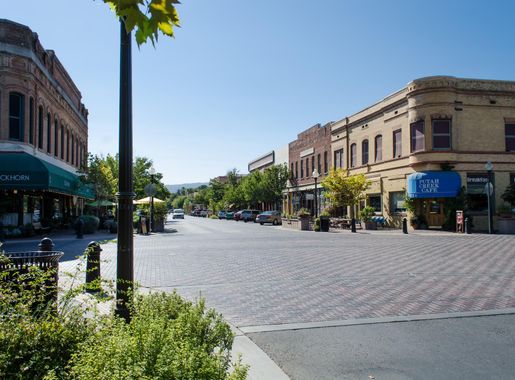
Granada: The Vibrant Heart of Cali
Discover Granada in Cali, Colombia: A vibrant neighbourhood brimming with culture, culinary delights, and lively nightlife, perfect for an unforgettable travel experience.
Granada, a charming neighbourhood in Cali, Colombia, is renowned for its vibrant atmosphere and rich cultural diversity. This area is a melting pot of modernity and tradition, where old colonial-style buildings stand side by side with contemporary architecture. As you stroll through its bustling streets, you'll be captivated by the eclectic mix of art galleries, boutiques, and gourmet restaurants that make Granada a sought-after destination for both locals and tourists alike. One of the highlights of Granada is its thriving culinary scene. The neighbourhood is a gastronomic paradise, offering a wide array of dining options that cater to every palate. From traditional Colombian dishes to international cuisine, there's something for everyone. Be sure to sample some local delicacies at one of the many trendy eateries or enjoy a leisurely coffee at a cozy café while watching the world go by. Granada is also a hub for nightlife, with an abundance of bars and clubs that come alive as the sun sets. Whether you're in the mood for a quiet drink or an energetic night of dancing, you'll find plenty of options to suit your taste. The neighbourhood's lively atmosphere and friendly locals make it an ideal place to experience the vibrant spirit of Cali.
Local tips in Granada
- Visit during the evening to experience Granada's dynamic nightlife.
- Explore the local art galleries for a taste of the vibrant arts scene.
- Try traditional Colombian dishes at local restaurants for an authentic culinary experience.
- Wear comfortable shoes as the best way to explore Granada is on foot.
- Don't miss the weekend markets for unique souvenirs and local crafts.
Granada: The Vibrant Heart of Cali
Granada, a charming neighbourhood in Cali, Colombia, is renowned for its vibrant atmosphere and rich cultural diversity. This area is a melting pot of modernity and tradition, where old colonial-style buildings stand side by side with contemporary architecture. As you stroll through its bustling streets, you'll be captivated by the eclectic mix of art galleries, boutiques, and gourmet restaurants that make Granada a sought-after destination for both locals and tourists alike. One of the highlights of Granada is its thriving culinary scene. The neighbourhood is a gastronomic paradise, offering a wide array of dining options that cater to every palate. From traditional Colombian dishes to international cuisine, there's something for everyone. Be sure to sample some local delicacies at one of the many trendy eateries or enjoy a leisurely coffee at a cozy café while watching the world go by. Granada is also a hub for nightlife, with an abundance of bars and clubs that come alive as the sun sets. Whether you're in the mood for a quiet drink or an energetic night of dancing, you'll find plenty of options to suit your taste. The neighbourhood's lively atmosphere and friendly locals make it an ideal place to experience the vibrant spirit of Cali.
Iconic landmarks you can’t miss
Plazoleta Jairo Varela o de La Caleñidad
Experience the vibrant atmosphere of Plazoleta Jairo Varela, a cultural gem in Cali, Colombia, perfect for food lovers and cultural enthusiasts.
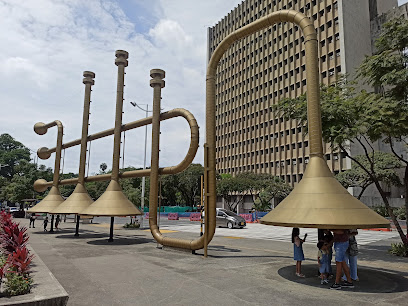
Antigua Plaza de Toros Granada
Discover the rich cultural heritage of Cali at Antigua Plaza de Toros Granada, a stunning historical landmark that showcases Colombia's vibrant traditions.
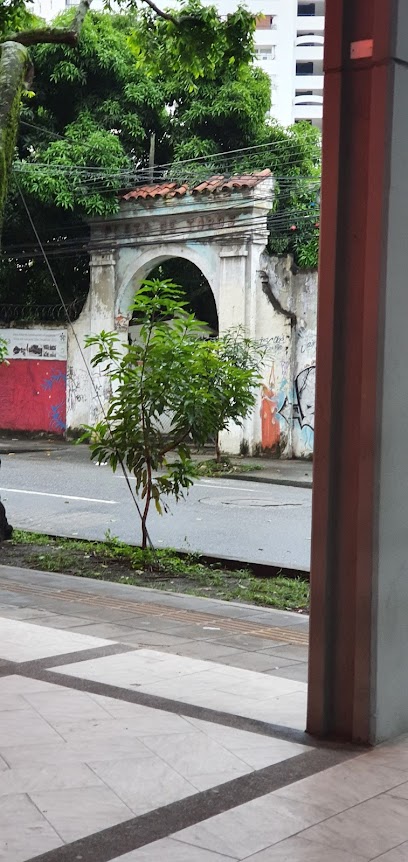
Castillo Carvajal
Discover the rich history and stunning architecture of Castillo Carvajal, a must-see historical landmark in the heart of Cali, Colombia.
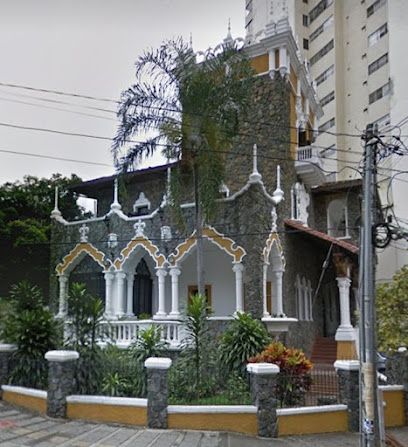
Mansion de los Leones
Discover the architectural beauty and rich history of Mansion de los Leones, a must-see landmark in the vibrant Barrio Granada of Cali, Colombia.
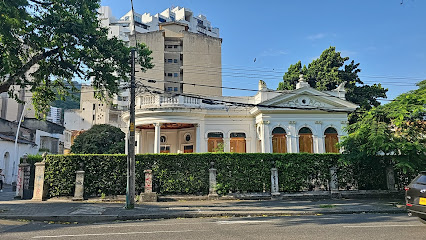
Mansion Ochoa o Amarilla
Explore the rich history and architectural beauty of Mansion Ochoa o Amarilla, a must-visit landmark in Granada, Cali, Valle del Cauca.
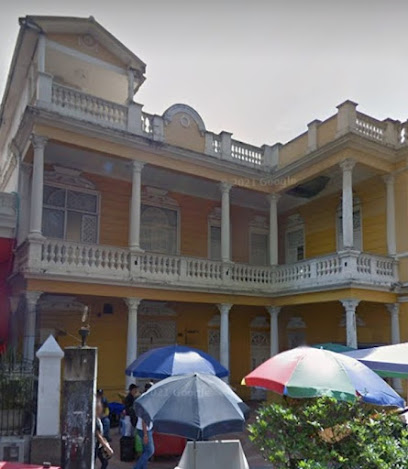
Mansion Gómez o del Rio
Explore Mansion Gómez o del Río, a stunning museum in Cali showcasing the rich architectural beauty and cultural heritage of Valle del Cauca.

Mansión Tobón Muñoz
Explore the architectural beauty and historical significance of Mansión Tobón Muñoz in the heart of Cali's vibrant Barrio Granada.
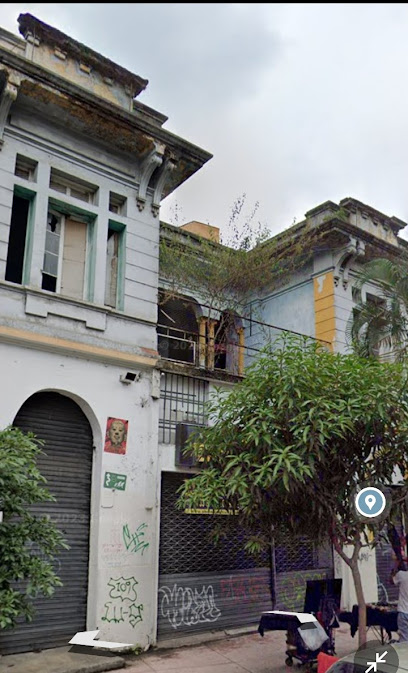
Casa Republicana de principios del siglo XX
Discover the rich history of early 20th century Colombia at Casa Republicana, a beautifully preserved museum in the heart of Cali's Barrio Granada.
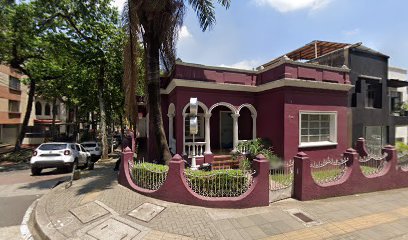
Casa Republicana de principios de S.XX
Explore the rich history and beauty of early 20th-century Colombia at Casa Republicana, a captivating museum in Cali's Barrio Granada.
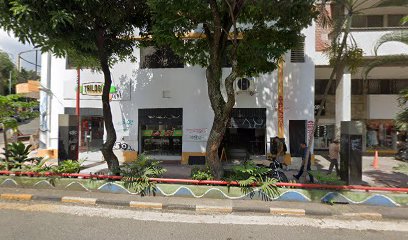
Castillo del Puente o Garcés
Explore the Castillo del Puente o Garcés, a historical marvel in Cali that showcases stunning architecture and rich cultural heritage.
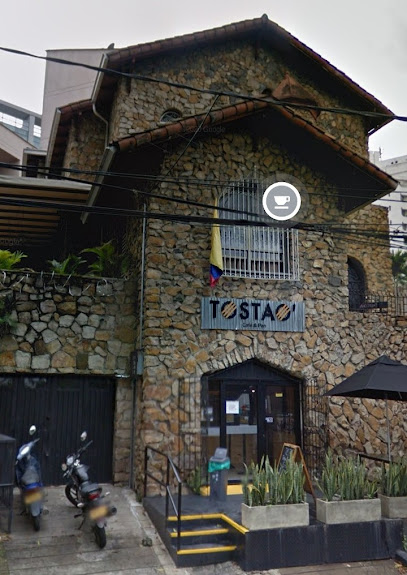
Unmissable attractions to see
Parque del Perro
Discover the beauty and vibrancy of Parque del Perro in Cali, a perfect blend of nature, culture, and local charm.
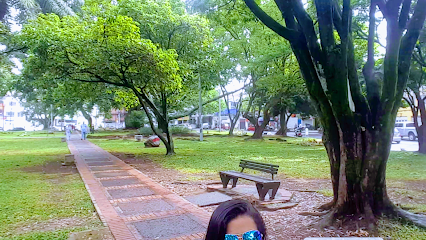
Plazoleta Jairo Varela o de La Caleñidad
Discover the vibrant spirit of Cali at Plazoleta Jairo Varela, a cultural hub for music, food, and local artistry in Colombia.
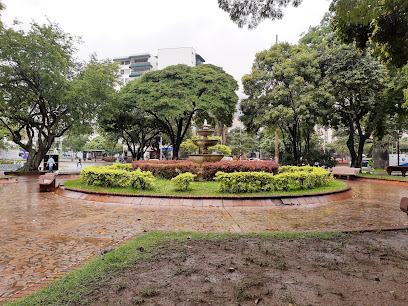
Parque Artesanal Loma de La Cruz
Explore the colorful crafts and rich culture of Parque Artesanal Loma de La Cruz in Cali, a must-visit destination for art and food lovers alike.
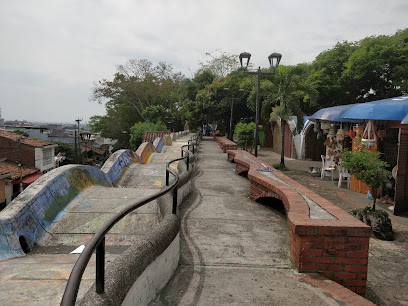
El Gato del Río
Discover El Gato del Río, a whimsical cat sculpture in Cali, Colombia, surrounded by lush greenery and the serene Cali River, perfect for photos and relaxation.
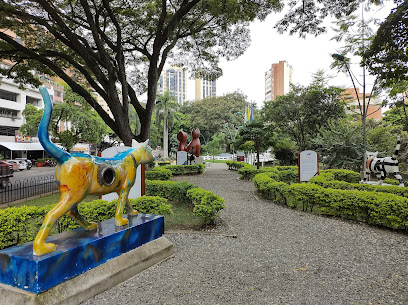
Parque Panamericano
Explore Parque Panamericano, a vibrant urban park in Cali filled with lush greenery, local culture, and endless opportunities for relaxation and adventure.
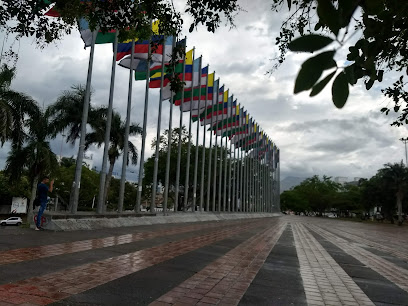
Museo Arqueológico La Merced
Explore the wonders of pre-Columbian history at Museo Arqueológico La Merced in Cali, a captivating destination for culture and history enthusiasts.
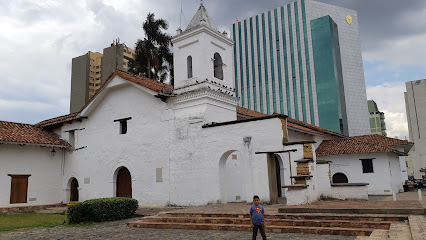
Retreta Park
Discover the beauty and tranquility of Retreta Park, a lush urban oasis in Cali, perfect for leisure and cultural experiences.
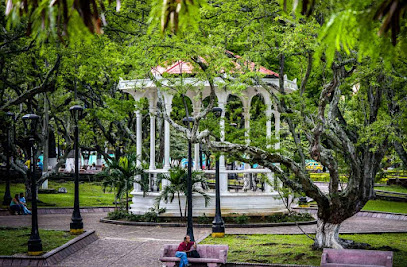
Museo Jairo Varela
Immerse yourself in the vibrant world of salsa at Museo Jairo Varela, where Colombia's musical heritage comes alive through rich exhibits and lively performances.
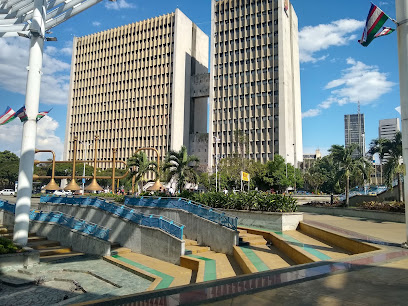
Monument to the Children
Explore the Monument to the Children in Cali, a serene park tribute reflecting on innocence lost and the spirit of community in a vibrant city.
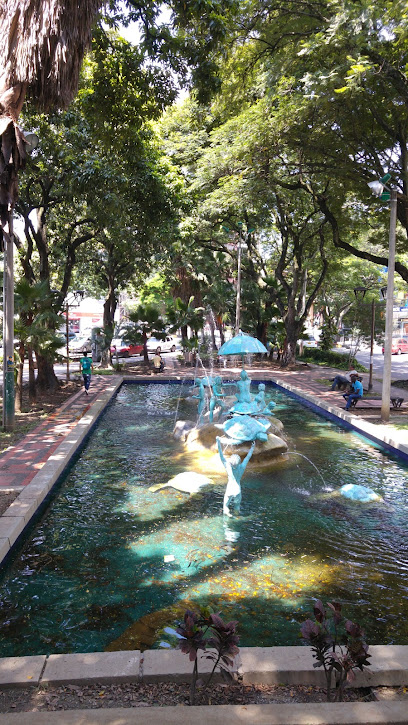
The Trumpet of Niche Monument
Explore the artistic heart of Cali at The Trumpet of Niche Monument, a symbol of the city's vibrant musical culture and architectural beauty.
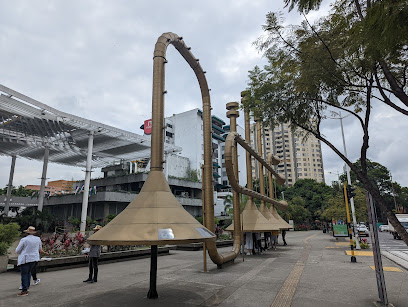
Essential places to dine
Storia D'Amore Granada
Experience the essence of Italy at Storia D'Amore in Granada, Cali - where authentic flavors meet exquisite dining ambiance.
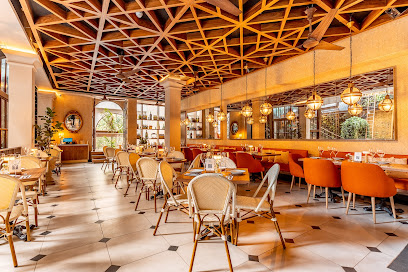
Cantina La 15 Granada Cali Norte
Experience authentic Mexican cuisine at Cantina La 15 in Granada Cali – where vibrant flavors meet lively atmosphere.
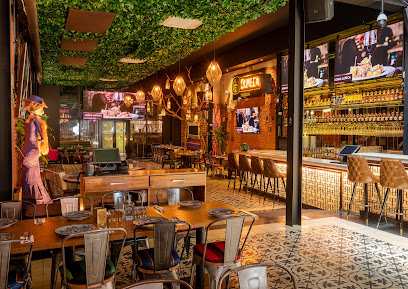
Hooters Cali
Experience the best of American cuisine at Hooters Cali—where great food meets sports excitement in a family-friendly atmosphere.
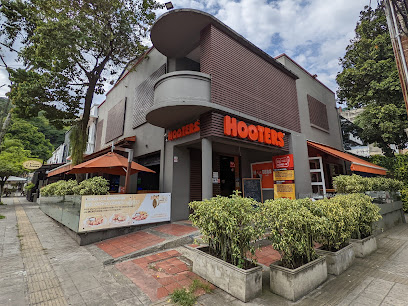
La Terraza de Granada
Experience the vibrant flavors of Cali at La Terraza de Granada, where delicious food meets stunning views in a lively atmosphere.
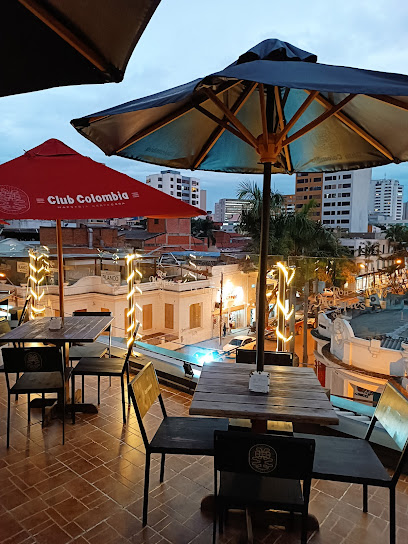
The Market Cali - Brunch & Casual Gourmet at Granada
Discover the vibrant flavors of Colombia at The Market Cali – your go-to spot for brunch and casual gourmet dining in Granada.
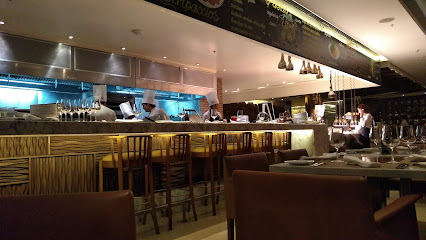
Faró Granada
Experience gourmet dining at Faró Granada – where traditional Colombian cuisine meets modern culinary artistry in Cali.
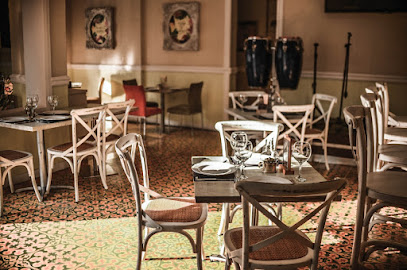
THE WAY STEAKHOUSE
Experience the best of American grill cuisine at The Way Steakhouse in Granada, Cali - where every meal is crafted with passion.
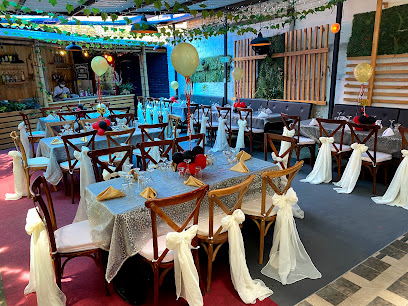
TOLOS RESTAURANTE
Discover the culinary delights at Tolos Restaurante, where exquisite ribs meet the vibrant culture of Cali.

Morada Ancestral - Restaurante Granada Cali
Discover the essence of Colombian cuisine at Morada Ancestral - where tradition meets innovation in every delightful bite.
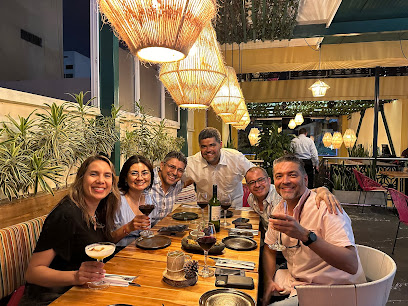
sadud a ragul
Discover the vibrant flavors of Colombia at Sadud a Ragul in Granada, Cali - an unforgettable dining experience awaits!
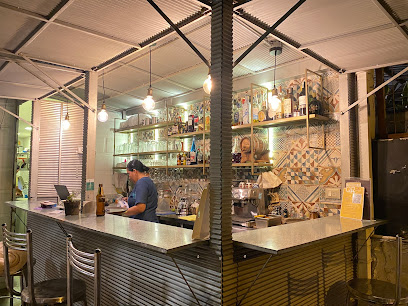
Markets, malls and hidden boutiques
Lloret de Mar Boutique
Experience the vibrant charm of Lloret de Mar Boutique—your one-stop shop for beachwear, trendy accessories, and unforgettable souvenirs.
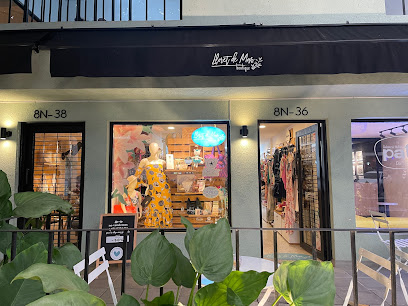
Itala
Explore Itala, a stylish boutique in Granada, Cali, offering unique fashion and accessories that embody Colombian culture and creativity.

Barrio Latino
Explore vibrant clothing and unique handcrafted items at Barrio Latino, a cultural gem in Cali, Valle del Cauca, celebrating local artisanship.
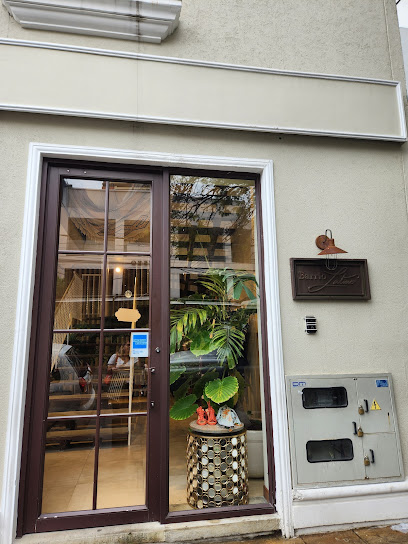
KLOSÉT store
Explore KLOSÉT, a trendy boutique in Granada, Cali, where fashion meets local creativity and unique styles await.
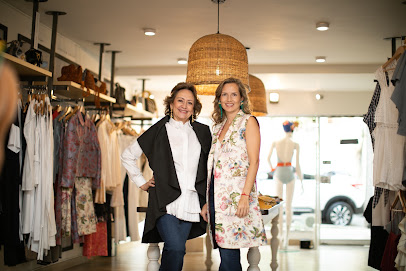
Mie Passione
Explore Mie Passione: A Boutique Haven for Unique Fashion and Colombian Artistry in the Heart of Granada, Cali.
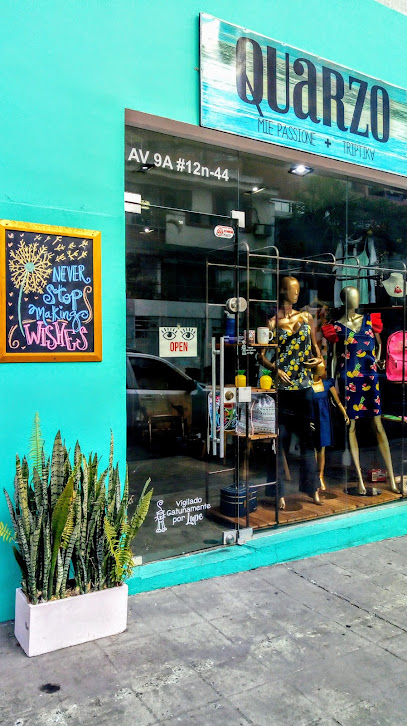
Bábaco
Experience the essence of Cali at Bábaco, a boutique offering unique fashion and artisanal treasures that reflect local craftsmanship.
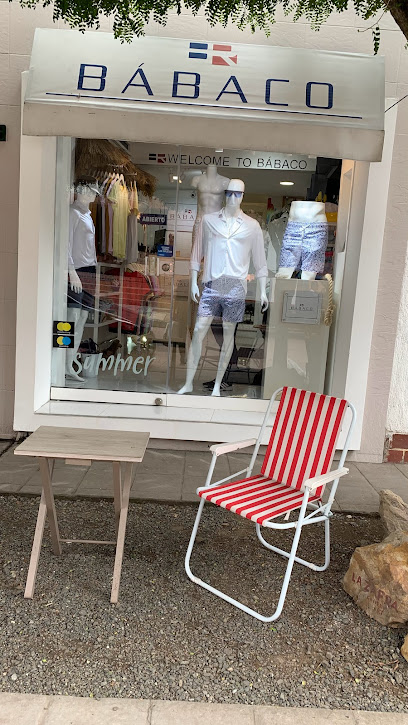
DetallesLyK
Explore DetallesLyK in Cali for unique gifts and artisan treasures that embody the spirit of Colombia, perfect for memorable souvenirs.
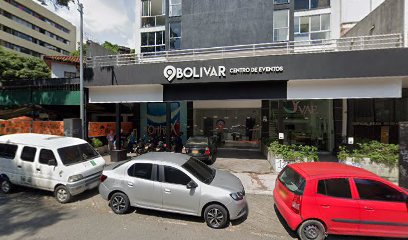
AMARAM
Explore AMARAM, a chic women's clothing store in Granada, Cali, offering trendy fashion and personalized service for every style.
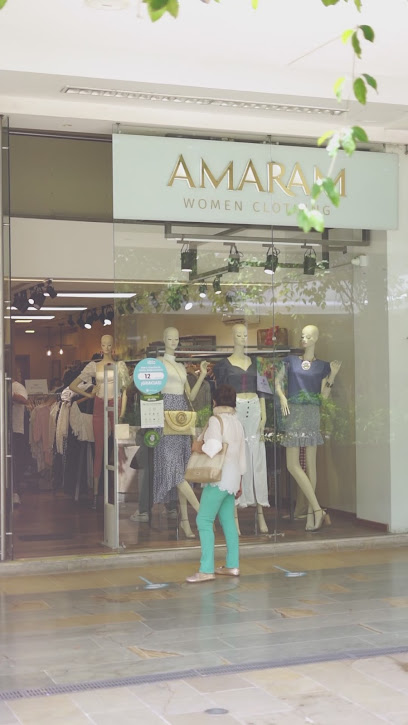
SALOMES Boutique
Explore SALOMES Boutique in Cali, Colombia, for a unique selection of women's clothing that merges elegance with contemporary flair.
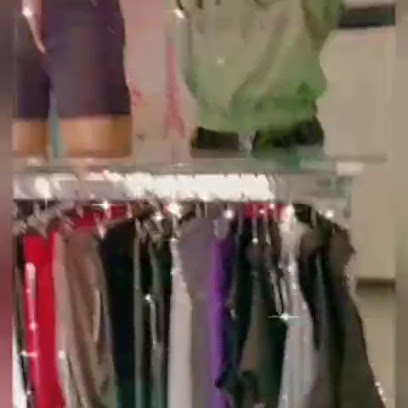
Vivi Mejía Boutique
Explore unique Colombian fashion at Vivi Mejía Boutique in Cali for a memorable shopping experience filled with local style and trendy designs.
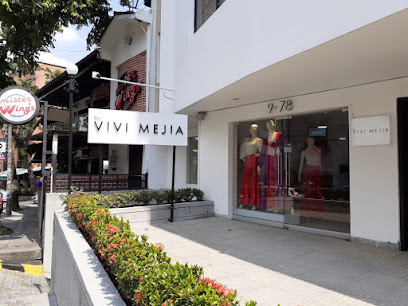
Essential bars & hidden hideouts
Bourbon St. Pub
Discover the vibrant nightlife of Cali at Bourbon St. Pub—a top bar and restaurant offering great drinks, delicious food, and unforgettable experiences.
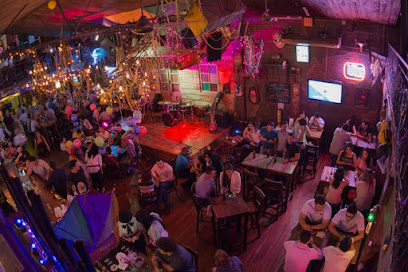
Bar Malibu Food and Cocktails
Explore the vibrant nightlife of Cali at Bar Malibu, where tropical cocktails and lively ambiance create an unforgettable experience.
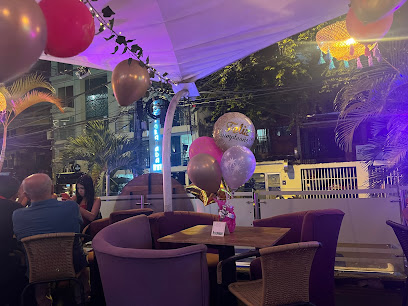
Regia Bar
Discover the vibrant nightlife at Regia Bar in Cali, where cocktails, live music, and a friendly atmosphere create unforgettable evenings.

TERRAZA 11 GRANADA / ONCE ONCE SPORT RESTAURANT
Discover the vibrant nightlife at Terrazza 11 Granada, a unique bar in Cali offering a blend of local charm and modern flair.
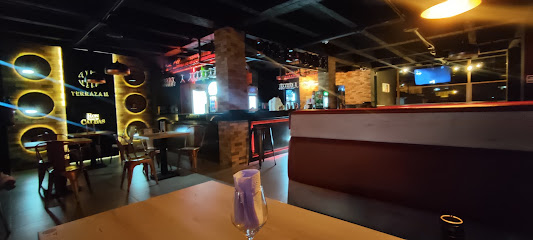
Aca Entre Nos Bar
Discover Cali's vibrant nightlife at Aca Entre Nos Bar, where creative cocktails and live music create an unforgettable experience.
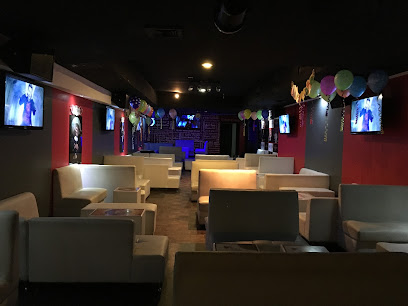
THE PUB LEGEND
Experience the vibrant nightlife of Cali at The Pub Legend, where great drinks and lively entertainment await every night.
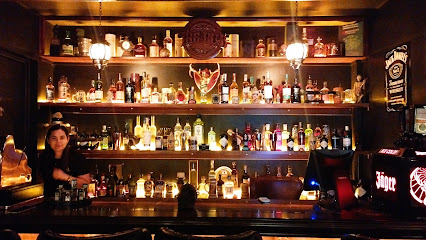
DR.JONES
Discover the vibrant nightlife at DR.JONES in Granada, Cali, where exquisite cocktails and a lively atmosphere await for a memorable evening.
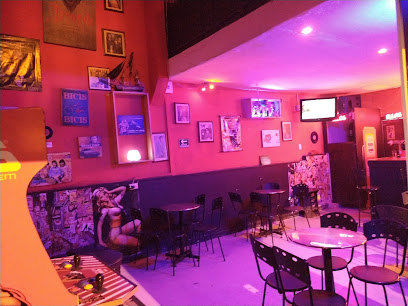
Blue Monkey Restaurant Bar
Discover the lively Blue Monkey Restaurant Bar in Granada, Cali, where delicious cocktails and local flavors come together in a vibrant atmosphere.
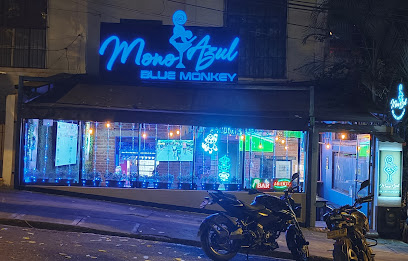
Brutus bear bar
Experience the vibrant nightlife at Brutus Bear Bar, a must-visit destination in Granada, Cali, offering cocktails, camaraderie, and culture.
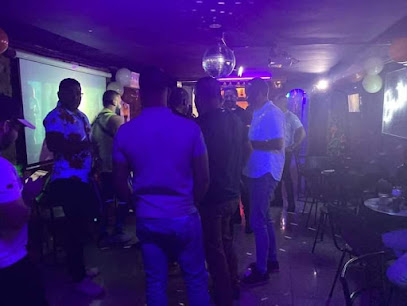
Caliyork Bar
Discover the lively Caliyork Bar in Cali, where vibrant nightlife meets creative cocktails in a welcoming atmosphere.
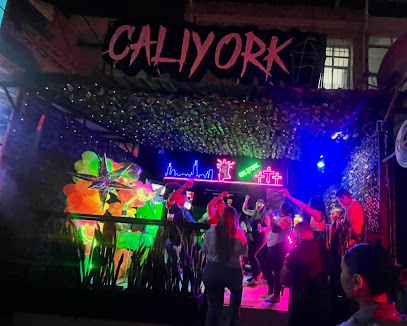
Local Phrases
-
- HelloHola
[oh-la] - GoodbyeAdiós
[ah-dee-ohs] - YesSí
[see] - NoNo
[noh] - Please/You're welcomePor favor/De nada
[por fah-vor/de nah-dah] - Thank youGracias
[grah-see-ahs] - Excuse me/SorryPerdón/Lo siento
[pair-dohn/loh see-en-toh] - How are you?¿Cómo estás?
[koh-moh es-tahs] - Fine. And you?Bien. ¿Y tú?
[byen. ee too] - Do you speak English?¿Hablas inglés?
[ah-blahs een-glays] - I don't understandNo entiendo
[noh en-tee-en-doh]
- HelloHola
-
- I'd like to see the menu, pleaseQuisiera ver el menú, por favor
[kee-see-eh-rah ver el meh-noo, por fah-vor] - I don't eat meatNo como carne
[noh koh-moh kahr-neh] - Cheers!¡Salud!
[sah-lood] - I would like to pay, pleaseMe gustaría pagar, por favor
[meh goo-stah-ree-ah pah-gar, por fah-vor]
- I'd like to see the menu, pleaseQuisiera ver el menú, por favor
-
- Help!¡Ayuda!
[ah-yoo-dah] - Go away!¡Vete!
[veh-teh] - Call the Police!¡Llama a la Policía!
[yah-mah ah lah poh-lee-see-ah] - Call a doctor!¡Llama a un médico!
[yah-mah ah oon meh-dee-koh] - I'm lostEstoy perdido
[es-toy pair-dee-doh] - I'm illEstoy enfermo
[es-toy ehn-fehr-moh]
- Help!¡Ayuda!
-
- I'd like to buy...Quiero comprar...
[kee-air-oh kohm-prar] - I'm just lookingSolo estoy mirando
[soh-loh es-toy mee-rahn-doh] - How much is it?¿Cuánto cuesta?
[kwan-to kways-tah] - That's too expensiveEsto es demasiado caro
[es-toh es deh-mah-see-ah-doh kah-roh] - Can you lower the price?¿Puedes bajar el precio?
[pweh-dehs bah-har el preh-see-oh]
- I'd like to buy...Quiero comprar...
-
- What time is it?¿Qué hora es?
[keh oh-rah es] - It's one o'clockEs la una
[es lah oo-nah] - Half past (10)Media (10)
[meh-dee-ah (deez)] - MorningMañana
[mah-nyah-nah] - AfternoonTarde
[tahr-deh] - EveningNoche
[noh-cheh] - YesterdayAyer
[ah-yehr] - TodayHoy
[oy] - TomorrowMañana
[mah-nyah-nah] - 1Uno
[oo-noh] - 2Dos
[dohs] - 3Tres
[trehs] - 4Cuatro
[kwah-troh] - 5Cinco
[seen-koh] - 6Seis
[says] - 7Siete
[syeh-teh] - 8Ocho
[oh-choh] - 9Nueve
[nweh-veh] - 10Diez
[dyehs]
- What time is it?¿Qué hora es?
-
- Where's a/the...?¿Dónde está...?
[dohn-deh es-tah] - What's the address?¿Cuál es la dirección?
[kwal es lah dee-rehk-syon] - Can you show me (on the map)?¿Puedes mostrarme (en el mapa)?
[pweh-dehs mohs-trar-meh (en el mah-pah)] - When's the next (bus)?¿Cuándo es el próximo (autobús)?
[kwan-doh es el proh-ksee-moh (ow-toh-boos)] - A ticket (to ....)Un tiquete (a ....)
[oon tee-keh-teh (ah)]
- Where's a/the...?¿Dónde está...?
History of Granada
-
Granada, founded in the late 19th century, emerged as one of the first planned neighborhoods in Cali, Colombia. Its creation was part of the city's expansion efforts, driven by the influx of immigrants and the need for urban development. The area was designed with wide streets and green spaces, reflecting the architectural trends of the period.
-
During the mid-20th century, Granada became a cultural hub in Cali. It was home to various artists, musicians, and intellectuals, fostering a vibrant community that contributed significantly to the local arts scene. The neighborhood saw the establishment of theaters, galleries, and cultural institutions that enriched the city's cultural landscape.
-
In the 1970s and 1980s, Granada was at the heart of Cali's salsa explosion. The neighborhood's dance clubs and music venues became essential for the salsa movement, attracting both local and international audiences. This period solidified Granada's reputation as a center for music and dance, influencing generations of salsa musicians and dancers.
-
In the late 20th and early 21st centuries, Granada underwent significant urban renewal. While this brought modernization and improved infrastructure, it also led to gentrification, altering the neighborhood's demographics and cultural fabric. The balance between preserving its historical charm and accommodating new developments remains a topic of discussion among residents and city planners.
-
Today, Granada is known for its lively atmosphere, with a mix of traditional and contemporary influences. The area boasts a range of restaurants, cafes, and cultural events, showcasing the culinary and artistic diversity of Cali. Festivals and celebrations throughout the year highlight the neighborhood's rich heritage and its role in the broader context of Cali's cultural identity.
Granada Essentials
-
Granada is well-connected to other neighborhoods in Cali. From the city center (El Centro), you can take a taxi or a local bus (such as the MIO system) directly to Granada. The journey typically takes around 15-20 minutes by car, depending on traffic. If you are coming from the airport (Alfonso Bonilla Aragón International Airport), you can grab a taxi or pre-arranged shuttle service, which usually takes about 30-45 minutes.
-
Granada is a walkable neighborhood, making it easy to explore on foot. Local MIO buses serve the area and connect to other neighborhoods. Taxis and motorbike taxis (moto-taxis) are also readily available and inexpensive. Renting a bicycle can be a fun way to navigate the area, especially along the scenic streets and parks. Be cautious when biking, as traffic can be busy.
-
Granada is generally considered safe for tourists, but standard precautions should be taken. Avoid walking alone late at night, especially in poorly lit areas. Areas like the outskirts of the neighborhood, particularly towards the southern parts, can have higher crime rates. Always be aware of your belongings and avoid displaying expensive items.
-
In case of an emergency, dial 123 for police assistance or 125 for medical emergencies. It’s advisable to have travel insurance that covers medical needs. There are hospitals and clinics in the area, and pharmacies are also available for minor health issues.
-
Fashion: Do dress comfortably but modestly, especially if visiting religious sites. Don't wear overly revealing clothing. Religion: Do respect local customs and traditions. Don't neglect to ask for permission before taking photos in religious areas. Public Transport: Do be courteous on public transport and offer your seat to the elderly. Don't eat or drink on the bus. Greetings: Do greet locals warmly, with a handshake and a smile. Don't be overly formal; a friendly demeanor goes a long way. Eating & Drinking: Do try local cuisine and accept food or drink offers. Don't waste food or drink; it's seen as disrespectful.
-
To experience Granada like a local, visit the Plaza de Granada, where you can enjoy street vendors and local artists. Check out the nearby parks, such as Parque de los Gatos, which features unique sculptures. Engage with local shopkeepers and ask for recommendations on food and attractions. Try to learn a few basic Spanish phrases, as this can enhance your interactions with locals.
Trending Landmarks in Granada
Nearby Cities to Granada
-
Things To Do in Popayán
-
Things To Do in Neiva
-
Things To Do in Armenia
-
Things To Do in Pereira
-
Things To Do in Ibagué
-
Things To Do in Manizales
-
Things To Do in Pasto
-
Things To Do in Bogotá
-
Things To Do in Medellín
-
Things To Do in Villavicencio
-
Things To Do in Ibarra
-
Things To Do in Otavalo
-
Things To Do in Tunja
-
Things To Do in Quito
-
Things To Do in Mindo









